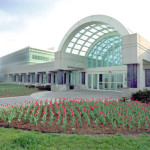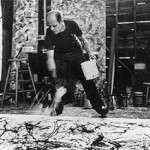By STEVE AISHMAN
Art as Cultural Weapon
Here are some things I was thinking about, but know nothing about.
*All of this may be wrong or taken out of context, but it is what my little research on the subject has discovered.*
In July 1950, the Congress for Cultural Freedom (CCF) was created with help from the CIA as part of the cold war to prove American cultural dominance over the Soviet Union. Throughout the 1950's and 60's, the CCF worked as front for the CIA by funding exhibitions through MOMA like the "Masterpieces Festival" in Paris 1952, the "Young Painter" exhibit in Rome in 1955, as well as many others. It is also known that people like William Burden (Commodore Vanderbilt's great-great grandson) served both as President of MOMA as well as the Director of a well known CIA front; the Farfield Foundation. MOMA trustee John Hay Whitney held a position on the Psychological Strategy Board which reported directly to the National Security Council. Nelson Rockefellerserved as Eisenhower's principal advisor and strategist for psychological operations during 1954-55 while simultaneously serving as the President of MOMA. These facts are well known and delineated by the CIA themselves on their website here as well as by many historians like Frances Saunders in her book The Cultural Cold War. However, it is important to note that many people disagree with the implications of these findings. New York Times critic Michael Kimmelman wrote an article called "Revisiting the Revisionists: The Modern, Its Critics and the Cold War", where he argues that much of the information implicating that MOMA was a pawn of the CIA is de-contextualized. However, Kimmelman concedes that "exhibitions sent abroad, like 'The New American Painting,' participated in a cultural campaign to fight Communism."
The links between the CIA's covert cultural activities in the 1950's and fine art, specifically MOMA, have become well-known, even if de-contextualized, since 1967 when the links were dramatically and embarrassingly exposed by Christopher Lasch in an article for the Nation. Some of these facts may help explain why Abstract Expressionism was singled out as the art form to be promoted by American art institutions in the 1950's and 1960's. Abstract Expressionism can be seen as the antidote to iconographical Soviet Realism. In comparison to Soviet Realism, Abstract Expressionism was viewed as having no political content and more importantly as completely disassociated from the historical position of European art. Abstract Expressionism could be promoted as an entirely American, democratic and capitalistic development of culture that could be used as a weapon against other forms of culture. Jackson Pollack himself said, "modern art to me is nothing more than the expression of contemporary aims of the age that we're living in... the modern painter cannot express this age, the airplane, the atom bomb in the old forms of the Renaissance or of any other past culture. Each age finds its own technique."
In order to push their agenda gobally in the 1950's and 60's, MOMA did many things beyond there own walls, like directly purchasing the American Pavilion at the Venice Biennale from 1954-1962. At the time, it was the only case of a privately owned (instead of government sponsored) pavilion at the Venice Biennale (Eva Cockcroft, "Abstract Expressionism, Weapon of the Cold War", Artforum, June 1974), but private ownership of the pavilions has since become common (the Guggenheim Museum currently owns the American Pavilion). Of course, during that time the American Pavilion was primarily populated by Abstract Expressionists. By the end of the 1960s Nelson Rockefeller had purchased over 2500 pieces of Abstract Expressionist art to cover the walls of Chase Manhattan Banks and American artistic cultural dominance through Abstract Expressionism was well established.
None of this necessarily bothers me, and I certainly do not mean it imply that the CIA working to establish America as culturally superior to the Soviets was a "bad" thing, nor do I want to imply that MOMA or the Abstract Expressionists were merely pawns in a larger political agenda.
What I do want to state is that the CIA and other American political institutions have a history of covert funding and promotion of specific aspects of American culture. Therefore, I fully expect that political institutions like the CIA are using their power to influence the art world today. As an artist and participant in the art world, I can view this one of two ways: Either I can be angered by yet another force influencing what art gets promoted due to an agenda that ostensibly has nothing to do with the actual work, or I can attempt to embrace it. But how do I embrace what is inevitably a covert operation? Any direct application of influence over the arts by a political power (none-the-less by the CIA or an institution like them) would be viewed as gauche (could you imagine an exhibition directly sponsored by the CIA at MOMA?). Therefore, political powers must be working behind the scenes in the art world to promote work that fits their agenda in ways that I know nothing about.
So rather than try to fight what is an inevitable application of power over the art world through channels I can't relate to, I will send up signal flare. After all, my goal is to make and show artwork. There will always be powers involved in the display of artwork that I cannot control. I don't want to get bitter trying to fight political and market powers. I want to harness them.
So here I go:
Does anyone out there know anyone in the cultural branch of the CIA? If so, I might have some work they would be interested in promoting...
CIA image courtesy of How Stuff Works.
Pollack image via Wikipedia.






